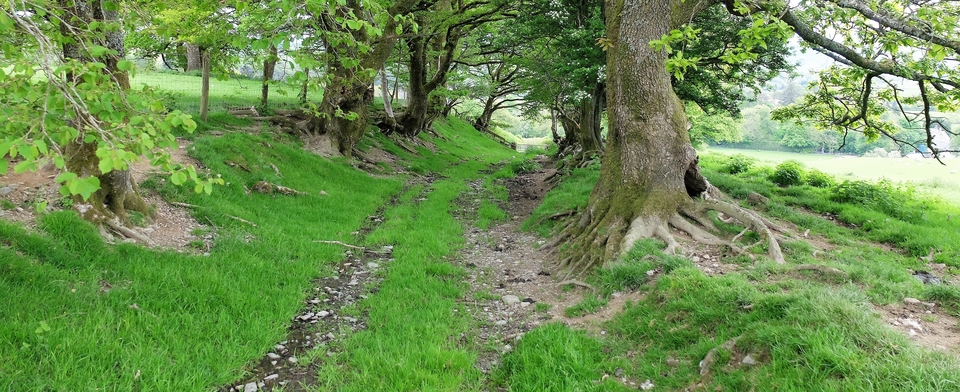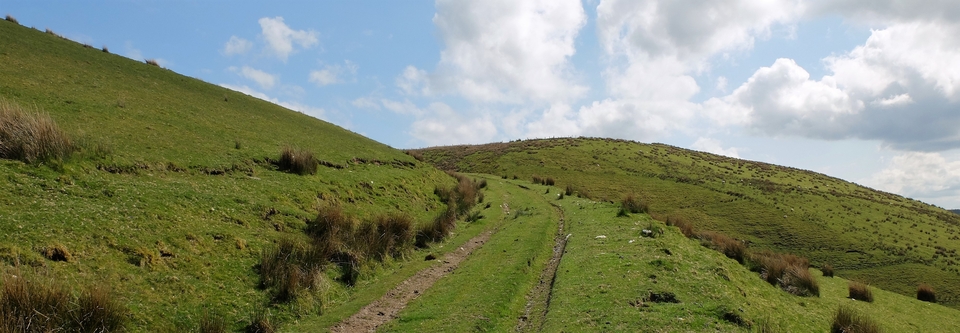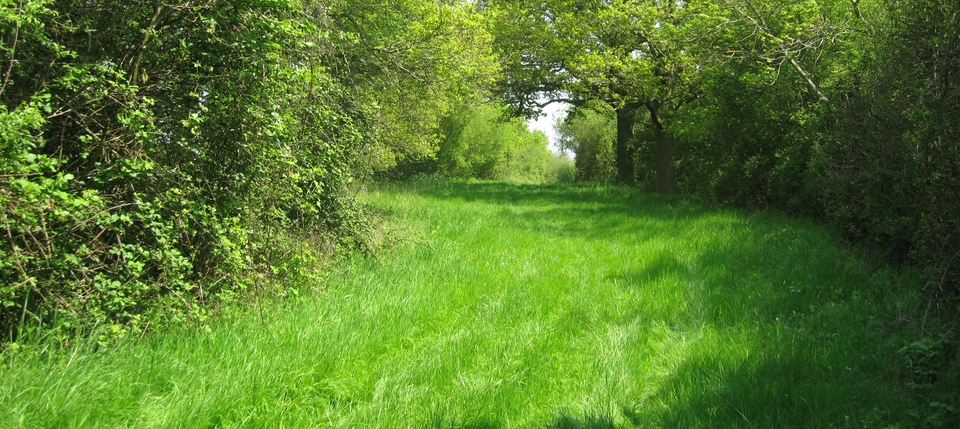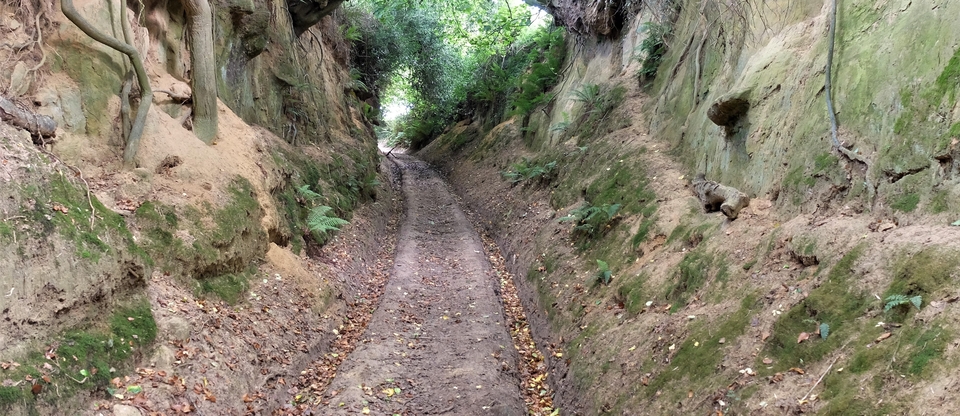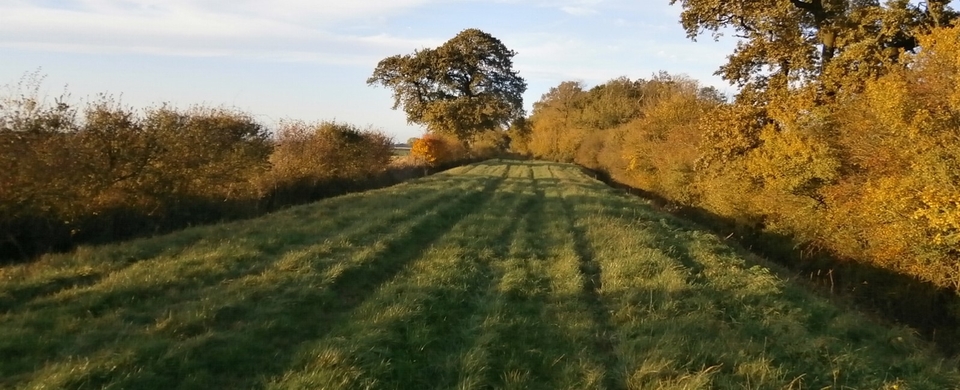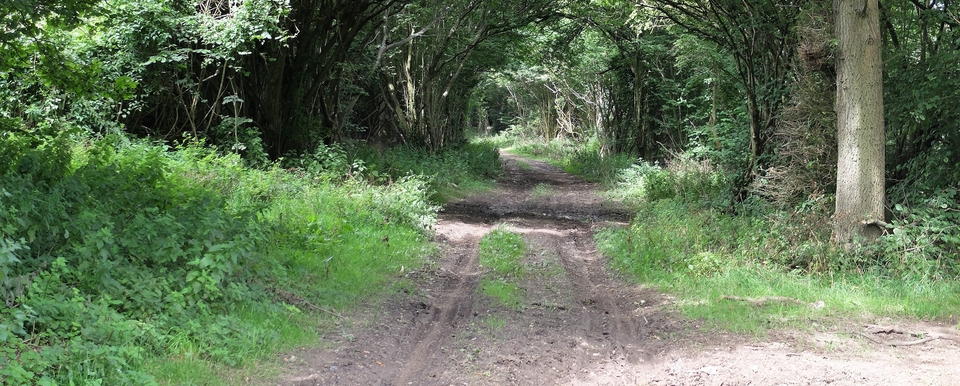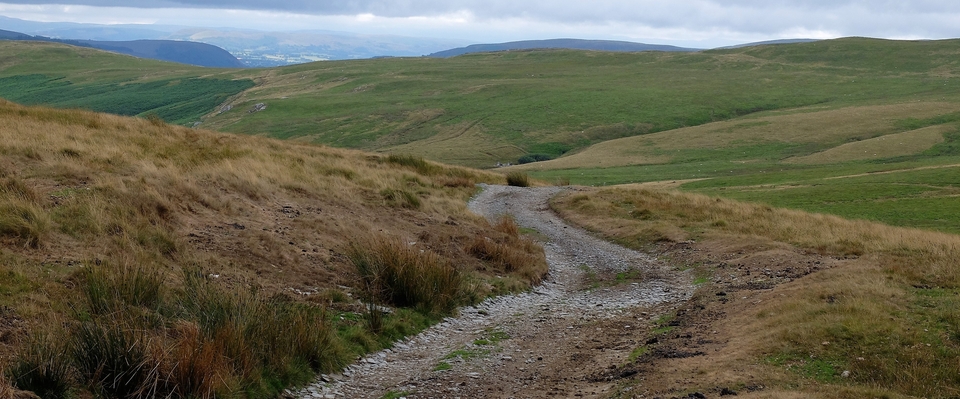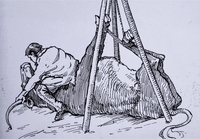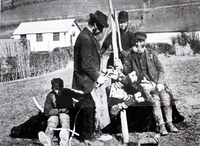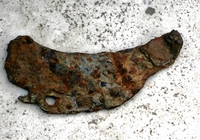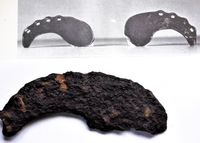Expenses
The average profit per head of cattle, as calculated by Professor Moore-Colyer, was just over ten shillings in the currency of the time. They were bought at, say, £4 in Wales and sold for double that in London; but grass (at the inns en route) and tollgates had to be paid for; and the drovers, their boys and dogs, needed food and beer – one has the feeling that the whole enterprise ran on beer. Hay was also a cost in the closing stages of the journey as so many beasts converged on London eating or trampling on the grass1.
But the most surprising expense was shoeing. Before cattle reached the metalled roads of England, each beast had to be shod, two shoes to a foot because of their cloven hooves. This involved wrestling the animal to the ground, tying its feet together and sitting on it until the blacksmith had done his work. (Oxen do not, as horses do, lift a hoof tamely for the smith to shoe.)
(The shoeing was a social occasion: the 'feller' (strong-man) was the local hero and bets were placed on how long it took to fell & shoe a beast,)
The first picture shows the 'feller' in action. The second, of an ox being shod for ploughing, was taken in Saddlescombe, West Sussex. All the men in the picture are doing vital jobs:
- the boy on the left is preventing the animal getting to its feet by sitting on its neck.
- the smith is putting the nails in, obviously. Less obviously, he probably had to tap the hoof gently with his hammer for fully half a minute beforehand - just to get it used to the strange ordeal & quieten it down.
- the man at the back is holding a tall conical wooden frame - perhaps one used to keep the air flowing inside hayricks & prevent mould. This holds everything steady for the smith, and for...
- ...the man on the right. Look closely and you'll see a short stick in his right hand. Twisted around this is a leather tourniquet - you can just see it in the gap between his hand and the hoof - which binds all the hooves together so there was no movement. The smith had very little margin for error because nearly all a bullock's hoof is quick. (This explains why the nail-holes are so near the edge.) In his left hand the man is holding the beast's tail. Why? (Added, February 2021) Annette Veazey from Ross Farm, Nova Scotia wrote to the website saying that lifting the tail of a felled ox was a method of subduing it. The more the lift, the more it hurt the beast. Another reason: an accurate flick with a befouled tail could have cost the man the sight of an eye.
The little ciws were sickle-shaped plates, only thick enough to last one journey, so they are a rare find. One was presented to me in 2013 by Gerald Ditum, to whom I shall be eternally grateful. I had complained to an audience at Hanslope that my life had narrowed down to one ridiculous quest: to find a ciw before I died. The picture of it in #3 shows the turning-up at the front to provide extra grip but also to prevent a stone getting wedged between shoe & hoof.
#4 shows the reverse of Gerald's ciw with two unused ones (museum-pieces) in the background. Note the bulges in the metal: the nails had to be driven in very close to the edge of the hoof because nearly all of it was quick, and to drive a nail into the quick would have crippled the ox.
Each beast cost tenpence to shoe in the early 19th century – nearly 10% of the average profit on each beast. Rustling, lameness and rinderpest were other hazards that put profits at risk.
The coming of the railways cut the cost of the journey by £1 a head and took 36 hours instead of three weeks; it also eliminated need for shoeing. So long-distance droving died. However, a journey of 50 miles or less was still cheaper on foot. Also: the railway trucks had to be paid for in advance (£15 on average for a 100-mile journey), so poor drovers would still use the roads - but return to Wales in comfort on the train.
(If you'd given the animals the vote, there would still be droving today.)
#5 is from the archive of Saddlescombe Farm. (Do you recognise one of the men - possibly both - from #2?) The use of oxen was vital to a farmer struggling to make a living: they were as strong as (most) horses and required no food besides grass and oats. Cheap labour, in other words.
(Note the long poles carried by both men. They were 16-foot long goads to prod the animal with from the plough.)
1 My thanks to Twm Elias' On the Trail of the Welsh Drovers for this.
